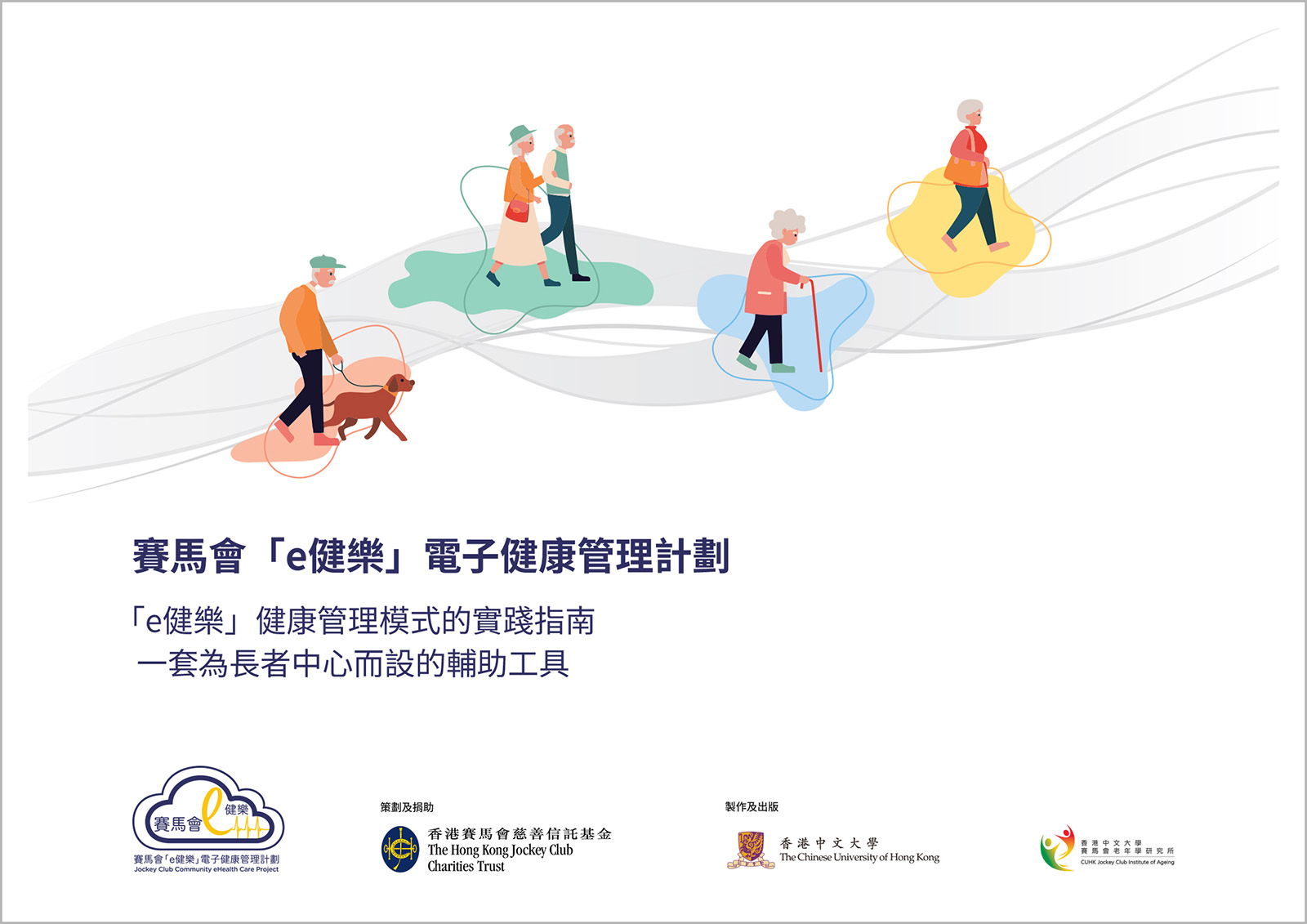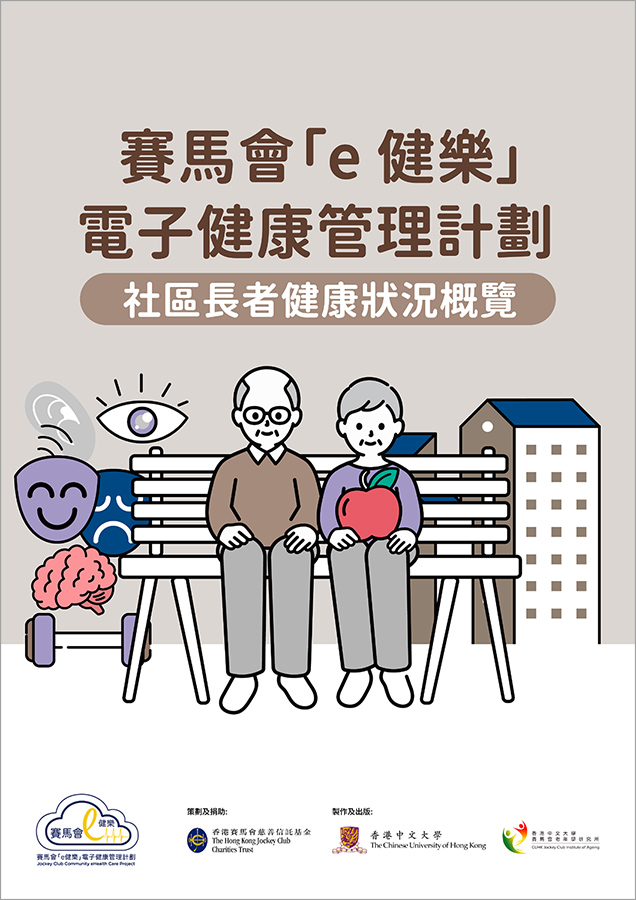JC Community eHealth Care Project
“eHealth Care Model” Implementation Guide –
A Toolkit for Elderly Centres
In response to Hong Kong’s ageing population, the Jockey Club Community eHealth Care Project has developed the “eHealth Care Model”, an integrated care approach tailored to the needs of local older adults. This model integrates the World Health Organization’s Integrated Care for Older People (ICOPE) framework with Hong Kong’s community-based experience, providing practical tools to support frontline staff in incorporating health assessments and interventions into the daily operations of elderly centres. Through standardized care pathways, the model also fosters multidisciplinary collaboration, enhancing service continuity and overall effectiveness.
This guide, blending international guidelines with local insights, provides a practical framework for frontline personnel and lays a solid foundation for advancing “Healthy Ageing” in Hong Kong.
Health Profile of Community-Dwelling Older Adults
As Hong Kong’s population continues to age, enhancing the health and quality of life of older adults has become a shared priority across society. To gain a more comprehensive understanding of the health status of community-dwelling older adults, the Hong Kong Jockey Club Charities Trust initiated and funded the Jockey Club Community eHealth Care Project, encompassing a territory-wide health survey. Led by the CUHK Jockey Club Institute of Ageing, the survey was conducted across all 18 districts of Hong Kong in collaboration with 45 non-governmental organizations, involving a total of 157 elderly centres.
This booklet presents consolidated data from the survey, covering multiple domains:
1. Chronic diseases and medication use
2. Intrinsic capacity
3. Geriatric syndromes
4. Physical activity
5. Instrumental activities of daily living
6. Utilization of medical services
These data help identify the health needs of older adults across different districts and provide a robust evidence base for policymakers, healthcare institutions, and social service organizations to develop more targeted strategies for prevention, screening, and intervention. This, in turn, supports the implementation of “Healthy Ageing” policies.








